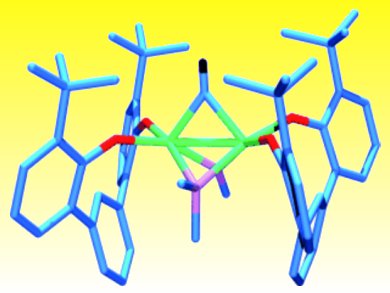The opportunities of molecular editing offered by diverted total syntheses are reviewed by A. M. Szpilman and E. M. Carreira. How do practitioners of chemical synthesis at the interface of chemistry and biology benefit from this approach? In Essays on J. D. van der Waals (equations of state) and O. Wallach (terpene chemistry) the authors look back at the achievements of these pioneers who earned Nobel prizes in 1910. The Highlights deal with metal-mediated oxidative cross-couplings of terminal alkynes, electron tomography, and diphosphorus as a laboratory reagent. H. Kisch discusses with T. Maschmeyer and M. Che apparent quantum yields for hydrogen photogeneration.
In the Communications section, D. Pan et al. present a new class of molecular imaging agents based on organic bismuth compounds. P. Melchiorre et al. report on the use of cooperative organocatalysis for asymmetric gamma alkylation of alpha-branched enals. A. S. Veige et al. obtained unusual insights into the splitting of a tungsten-tungsten multiple bond and the formation of a methylidene-bridged ditungsten complex (see picture).


